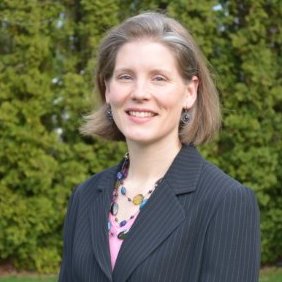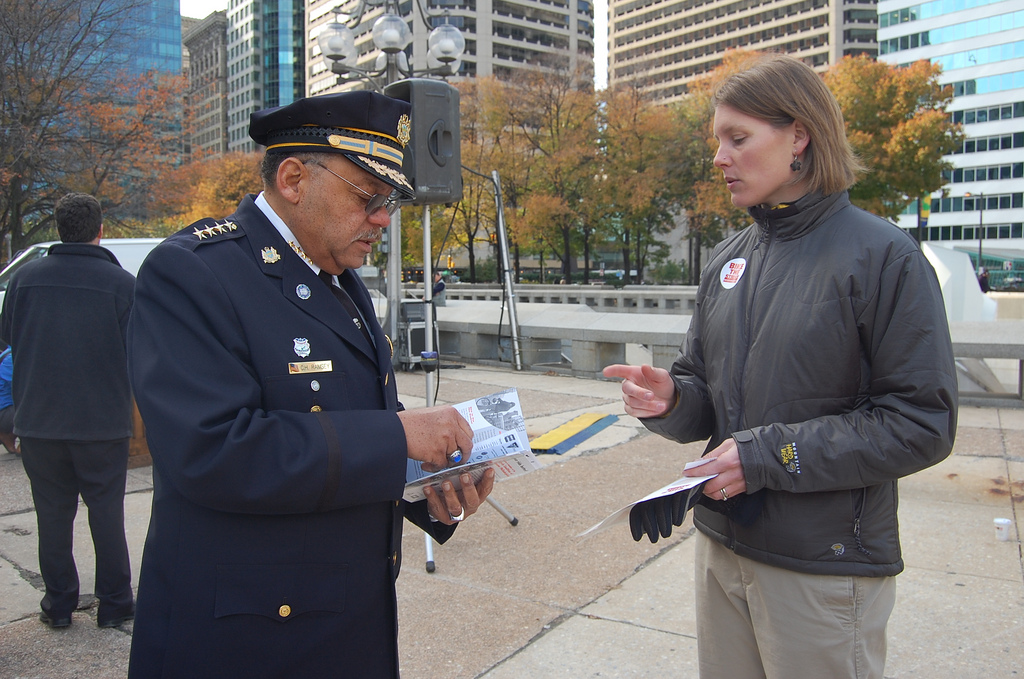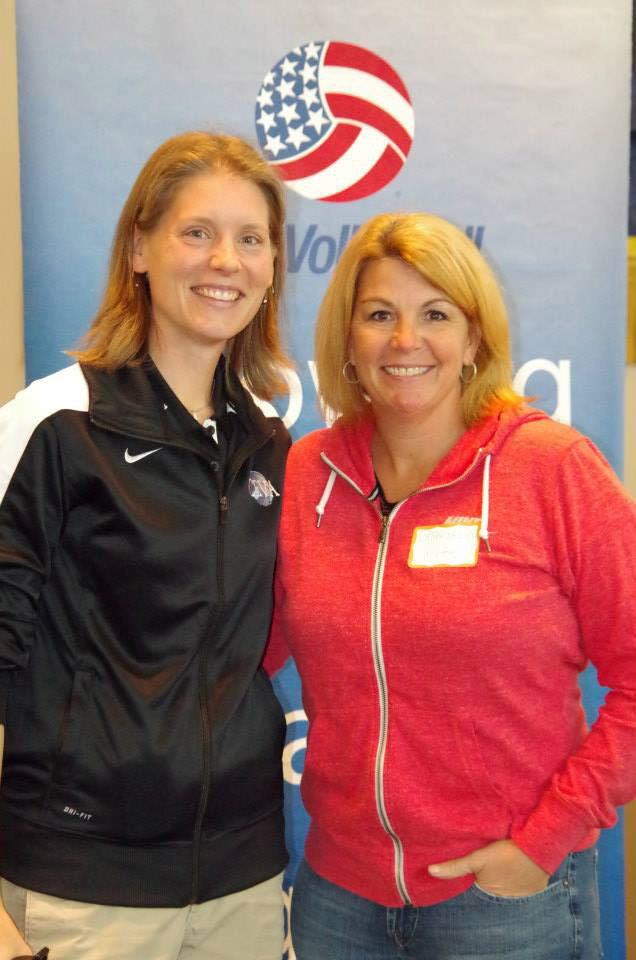 As Breen Goodwin transitions from her current job and prepares for a reprieve into the wilderness before starting her role as the next Executive Director of the Alliance, we spoke with her about her professional background, her leadership style and her excitement to “come home” to the active transportation movement.
As Breen Goodwin transitions from her current job and prepares for a reprieve into the wilderness before starting her role as the next Executive Director of the Alliance, we spoke with her about her professional background, her leadership style and her excitement to “come home” to the active transportation movement.
Even in her earliest years, Breen Goodwin has never been a stranger to advocacy and team building.
As a kid in Tacoma, Goodwin spent ample time at the state capitol with her father, who was the lead lobbyist for the Washington State Medical Association. Before she could vote, she’d met the governor and served as a page in the legislature. “I grew up in an environment where advocacy work was part of our life,” she says.
Youth sports were also a key aspect of her upbringing, and when she burned out as a competitive tennis player in middle school, she sought to blaze a new trail of her own. “I wanted to choose a sport that no one in my family knew anything about,” she says with a laugh. “I’ve got a little bit of an independent and stubborn streak there. So I chose volleyball.”
It was a choice that would afford her many opportunities — a scholarship to Villanova, a graduate degree from the University of Connecticut and her first jobs as an assistant college coach. Volleyball not only taught her life lessons — like learning how to rebound from a loss — but gave her insight into her professional strengths.
“I was very good administratively,” she recalls of being a coach. “I didn’t actually derive nearly as much enjoyment from on-court coaching as I did making sure everything could work.”
In 2006, when her husband got a job at the University of Portland (also a volleyball blessing: they met while coaching at Rice University in Texas), she moved to Portland. Her day jobs at the Columbia Empire Volleyball Association and then a boutique mortgage company were positive professionally but didn’t inspire her passions — but she found something that did. While she’d been an off-and-on bicycle commuter since her days at Villanova, Portland introduced her to the deep fulfillment of bicycle advocacy.

“I became part of an organization called npGreenway, which is a great trail advocacy organization,” she says. “It was my first exposure to active transportation advocacy and I loved it. I starting teaching basic fix-a-flat and commuting classes to groups of friends and then a few corporate groups, like Adidas and Freightliner. I remember going to my first Metro council meeting and, watching Francie Royce testify, I thought she was so cool [laugh].”
When her family relocated to Philadelphia in 2008, she made a career transition which made that passion her profession. When she found a job posting for a position at the Bicycle Coalition of Greater Philadelphia the application deadline had already passed. But Goodwin didn’t let the chance slip past. She picked up the phone and reached out directly to the executive director, Alex Doty — and earned an interview.
“I walked in and internally laughed, [thinking] ‘Yep, this is a total nonprofit,’” Goodwin recalls. “There were four people in this cramped space with bikes and storage everywhere. We were sitting in this tiny conference room, and I thought, ‘Let’s do this. This looks fun.’”
On paper, she was brought in to manage a new contract to create a bicycle ambassadors program — one that would end up being a model for other cities nationwide. But she did more than just start a program. She played a critical role in building the capacity of the organization during a key period of growth.
“The Bicycle Coalition certainly had relationships with the city of Philadelphia before I got there, but I think there’s a different expectation of success when a contract is in place,” she says. “The city really figured out that we were someone to trust — that they could rely on the coalition to accomplish the goals, and that we were a good investment. That’s something I’m very proud of.”

Goodwin (far right) with BCGP Bicycle Ambassadors and members of Gearing Up
To accomplish those goals, the BCGP had to build a highly capable staff. Goodwin played a central role in that hiring process, cultivating an internal culture that’s helped the organization deepen its impact and expand its perspectives.
“I’ve spent a lot of my time building teams,” Goodwin says, “and I was able to bring in really, really good staff who did their jobs very well. A lot of the staff that I helped bring on are still there, or they were able to hire great staff because it is such a positive organization. I really believe that difference makes us stronger — not only differences in personality but also in perspectives and educational backgrounds. So being able to bring in folks who span the spectrum and making sure they know on their first day that, the person who is very different than you? That person should be cherished. That’s the person who’s going to help you grow. I think having that internal culture makes for a strong organization internally and externally.”
That growth required the organization itself to evolve. “[The Bicycle Ambassadors] was the start of the education program, and I can tell you, in my first year, I broke everything,” Goodwin says with a laugh. “All of a sudden, we had all these part-time staff, and nothing was at the capacity it needed to be.”
She found herself, not only managing a successful, first-of-its-kind program, but tapping into her behind-the-scenes management skills to seamlessly evolve into a Deputy Director role, implementing important systems related to human resources and office administration. During her three-year tenure, the BCGP education staff grew from zero to 13. The organization received a large grant from the Centers for Disease Control and Prevention, and launched the Safe Route Philly initiative, partnering with more than 180 local schools in just two years.
“I loved going to work,” Goodwin says. “I loved the people. I loved that what were were doing was making a different — and I thought I was making a difference internally. It was the hardest job I ever left.”

But, in 2011, Goodwin’s professional development and personal goals required a shift. She and her husband were ready to start a family and relocate closer to family. And, just as she had advanced the BCGP, the coalition had prepared her to take the next step, as well. She and her husband both laughed when a seemingly perfect fit popped up at… the Columbia Empire Volleyball Association.
“I was specifically looking at an Executive Director position,” Goodwin recalls. “I was ready to make that jump. Honestly, though, I was a female — and a young female — and no one would give me any time. It was really frustrating. The CEVA position opened up and a week into thinking about it, I realized ‘I can change that place. I have the skills and background and a lot of relationships in the region.’ I didn’t want to coach or play. I wanted to fix the organization, rebuild it so in three to five years it was a strong nonprofit that could continue to build.”
That’s exactly what she did. Similar to the Alliance, the Empire (insert Star Wars joke here!) is a complex, membership-based association representing for-profit and non-profit youth volleyball clubs, as well as the athletes and their parents. In 2011, it was a struggling operation — an organization that Goodwin was able to turnaround in a matter of years.
“From a leadership perspective, I didn’t come in saying, ‘This is how we’re going to do things,’” she explains. “It was about building relationships and working through, ‘What are the priorities for our clubs of different sizes?’ It took time to see how the system was designed and how it could be best suited for our membership. To do that I really started to question why. Why did we have the programs and policies we had in place? By questioning we were able to talk at a much higher level. I tried to move people away from the minutia of our policy into why do we even have it to begin with and is it still right for the organization? Lots of policies had been on the books for 20 years, so they were ingrained in how we do things. It took a couple of years to work with our committees to really change a lot of things, but we’re a better organization as a result.”
 For Goodwin, that change wasn’t based on her skills alone but on empowering others.
For Goodwin, that change wasn’t based on her skills alone but on empowering others.
“My goal is always creating an environment for everyone to succeed,” she says. “I don’t have any preconceived notion that I’m going to come in and solve all the problems. From a leadership perspective, I’m a team builder. I don’t run solo. I want to be a leader that listens; one that can help connect the dots, not only internally at the staff level but with partners and with parallel work happening in our communities.”
That perspective couldn’t be more applicable to her new role as the Executive Director at the Alliance. Whether it’s establishing a strategic plan that aligns with the needs of our member organizations or advancing our commitment to equity, diversity and inclusion, Goodwin describes her leadership style as collaborative above all.
“We need to be open to saying, ‘I don’t have all the answers,’” she says. “Honestly, I think that’s a theme with active transportation itself. If any one of us had the answer, there wouldn’t be a problem. This is a very large, challenging puzzle that we have to continue to break down together, to figure out what all the pieces are to move it forward. So I’m thinking about, how do we not only advance our groups, but how do we connect ourselves to parallel organizations and movements, as well?”
Lucky for the Alliance, Goodwin has the absence to see those connections — and the movement overall — with fresh eyes. And, inspired by what she’s witnessed over the past five years, she’s energized by the tremendous progress and potential of the bike-ped movement to create lasting community change.
“Not only do I think biking and walking is a worthy thing to be an advocate for, but I absolutely think we’re going to continue to find success as a whole,” she says. “The movement has become much more professional, much more sophisticated. And that’s important. We have to understand how the system works in order to make the system work for us. But we also have to recognize all the players and all the issues that are impacting what we’re doing, rather than thinking we can address a certain set of policies and everything will change. It’s much, much larger than that. I’m incredibly excited about the potential and I think we have very smart people in the room. But we also have to ask who isn’t in the room and who are the people we need to be working with?”
As soon as she starts on September 1, Goodwin says her priority will be to listen. Her goal will be to learn from Alliance members and partners, both current and potential. And she couldn’t be more eager to, as she describes it, “dig in.”
“It feels like I’m coming home,” she says.
Welcome back to the People Powered Movement, Breen!
Stay tuned for more on Goodwin and the future of the Alliance in coming weeks.

